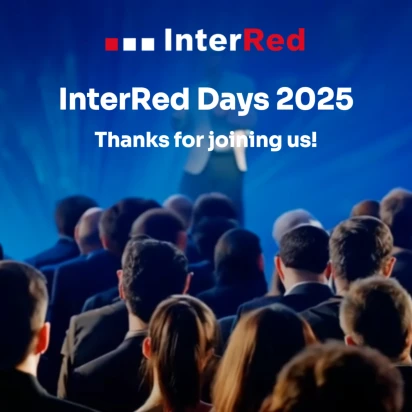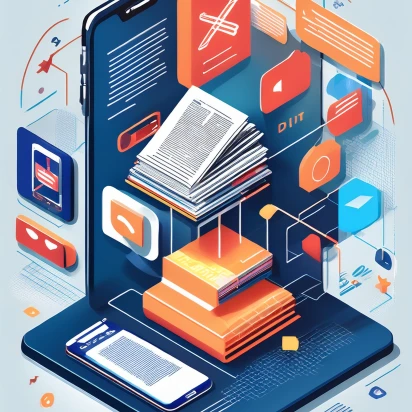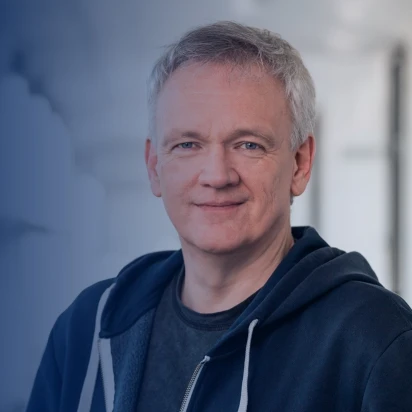
How the Rheinische Post is using AI to build its print pages faster
- 26.05.2025
The Rheinische Post saves around 25 minutes per page every day with print automation from InterRed SmartPaper – an enormous efficiency gain with over 120 pages for 19 local editions. An article by kress pro shows how this is achieved. With the kind permission of the trade magazine, we are publishing the full article from issue 4/2025 here.
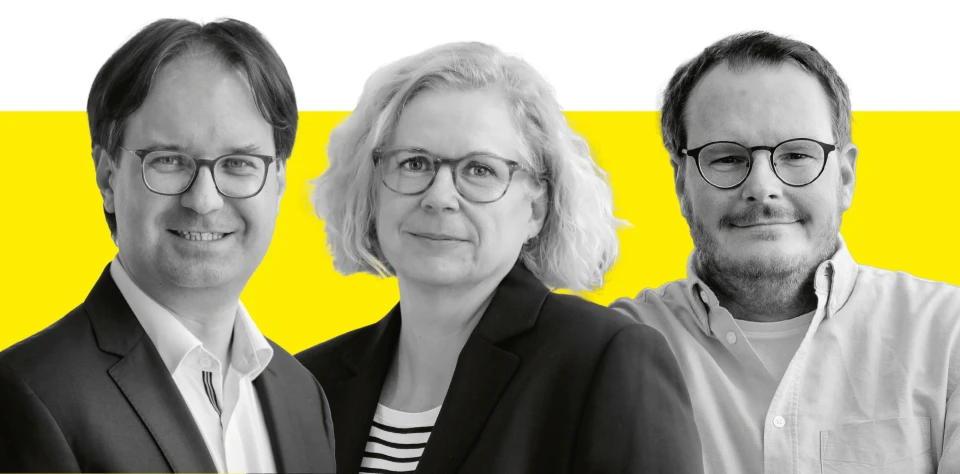
Production professionals at RP: Sebastian Brinkmann (Director of Publishing Services, left), Martina Stöcker (Deputy Editor-in-Chief) and Moritz Stanarius (Senior Regional Editor). Highlight pages will continue to be ‘built by people’ in the future, according to Stöcker. © Rheinische Post
The daily newspaper has its layout created automatically. This saves a lot of time and makes print production more efficient. What is important during implementation and how to win over the editorial team for the changeover.
The makers of the Rheinische Post (RP) have been thinking about how to simplify and speed up the production of the printed newspaper for some time. Around two years ago, they had their first in-depth discussions with their service provider InterRed, whose editorial system is used at RP. With the help of AI-supported technology, it is now possible to create automatic layouts for print editions from digitally available content based on sample pages. The pilot project started in October 2024 with the Krefeld-Kempen edition, and by mid-May, 19 of 24 local editions had been converted to the new system. An average of around 120 pages are produced daily. Six questions and answers about the changeover:
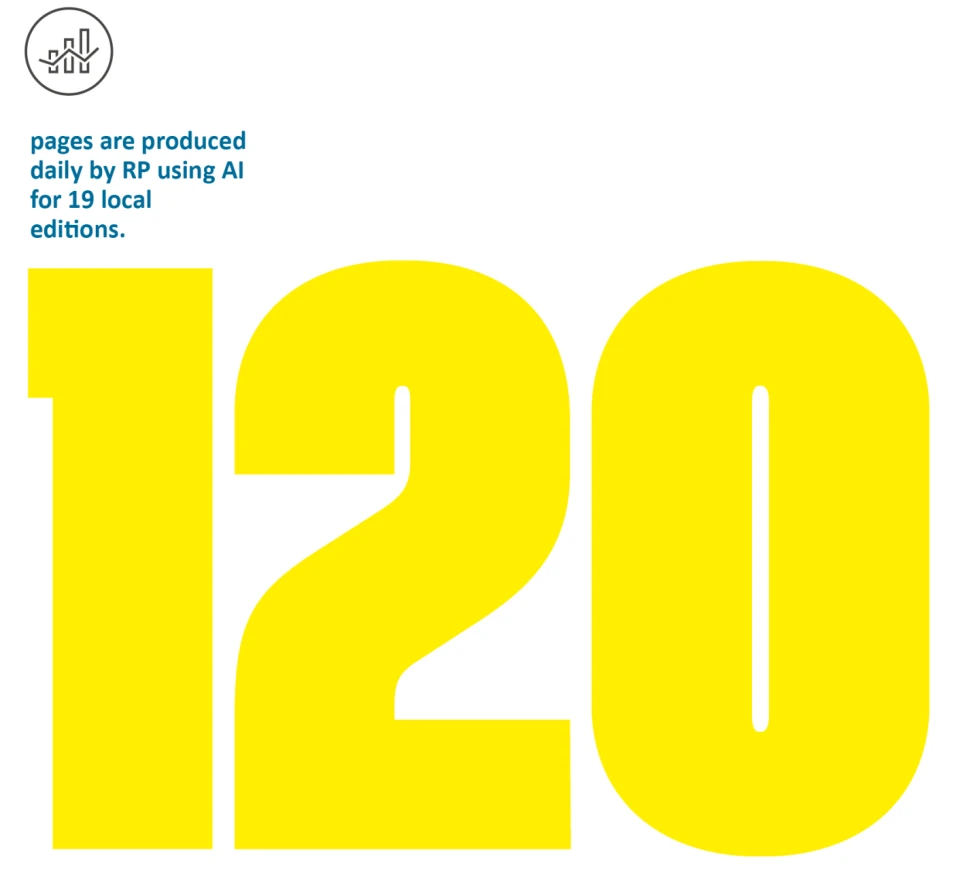
1| Why did RP automate the layout?
In print production, a significant part of the work involves layout, which is why the use of appropriate AI applications to reduce time and costs is particularly interesting for publishers. The skilled use of layout at the touch of a button saves time without compromising quality. That is the aim:
‘We want to continue to offer a high-quality, visually appealing and error-free product,’ says Martina Stöcker, deputy editor-in-chief of the Rheinische Post.
Specially designed highlight pages will still be possible for special occasions. ‘These pages will continue to exist in the future – created by people,’ says Stöcker.
2| What does AI-supported page production offer?
The RP works with InterRed's editorial system and now uses its advanced system: Via ‘InterRed SmartPaper,’ content selection and page design are fully automated based on currently over 200 defined sample pages for the local editions of the ‘Rheinische Post.’
Important to know: RP has been working according to the ‘digital first’ principle since 2020, which means that every article is conceived and prepared independently of the channel and then edited at the digital and print desk. This goes hand in hand with the separation of authors (reporters) and editors, which is now typical in the newspaper industry.
At first glance, not much has changed in the browser-based editorial system, ‘just a few buttons have been added,’ as Sebastian Brinkmann, Director of Publishing Services, adds with a smile. Users do not have to enter prompts, but instead use the programme menu. The teams of authors prioritise their texts and determine, for example, which photos must or can be published. ‘The editors check the planning and the layout selected by the programme for each individual page,’ explains Moritz Stanarius, Senior Regional Editor for Print Production. The software automatically takes care of the placement of texts, images and other elements according to predefined rules.
3| How does the automated layout work?
The existing print layout has not changed. The ‘SmartPaper’ application also pays attention to aesthetic principles, intuitive arrangement, readability and visual flow. The system processes the imported files (texts, photos, graphics) within a few minutes and then delivers a layout proposal.
Headlines, introductions and captions taken from the online versions (‘digital first’) are adapted with the help of AI. If texts are too long or too short, if there are too many or too few photos, or if the intended quotes or info boxes do not fit, the AI takes care of this automatically.
However, in the best case scenario, the application becomes a virtual colleague, but not a boss. "Ultimately, the editors decide how a page looks and goes to print," emphasises Moritz Stanarius.
Every change made by the AI, whether it's a modified headline or a shortened text, is displayed and confirmed or rejected by the editorial team, similar to the correction mode in text programs. This is very important to RP, which has established corresponding AI guidelines.
‘In the end, it's always a human being who makes the decision,’ says Martina Stöcker.
4| What is important when introducing AI?
Sebastian Brinkmann, who did an internship at RP and later played a key role in introducing the editorial system, emphasises: ‘It's often said, but it's always true: with processes like this, you have to take people with you and make your plans and approach transparent.’
The colleagues affected were informed about the upcoming changes at an early stage.
It was advantageous that the people at the desk had already been working with ‘SmartTemplate’, a predecessor version of ‘SmartPaper’ that automatically balances text translations and captions. ‘That's why the editorial team was quite positive about the next step. We expected the machine to make our work easier,’ says Stanarius.
Editors and reporters – who are less affected by the change in their daily work – were familiarised with the new workflows in groups. Reporters were briefed on what they need to bear in mind when planning in the Kordiam content coordination tool, and editors received technical training.
‘It wasn't a big effort. Each editor was trained in small groups in maybe two hours,’ reports Moritz Stanarius.
Something else was more important and effective, as Sebastian Brinkmann explains: ‘There are always colleagues who are particularly interested in an innovation or a project. We involve them in the processes at an early stage and build up their expertise. These “key users” pass on their expertise internally, so the necessary knowledge spreads quickly and in a practical way.’
5| What special features need to be taken into account?
From an editorial point of view, it is particularly important for a regional newspaper to address the specific characteristics of the individual municipalities. Accordingly, the focus, preferred text formats and range of topics vary in the respective local editions.
‘That's why we need to be able to design the pages flexibly,’ emphasises Martina Stöcker.
AI is well trained to lay out fewer, larger stories on a page in an appealing way, adds her colleague Stanarius.
‘But the smaller the elements, the more challenging it becomes for the AI.’ The news columns, which the RP does not want to do without in its local coverage, also prove to be somewhat more complicated for the layout machine. [Note: InterRed expands print automation with intelligent News-in-Brief (NIBs) design]. The integration of the technology has gone well, says Sebastian Brinkmann, ‘but of course not everything runs perfectly right away.’ That's why resilient employees are needed who don't make big problems out of small ones.
‘You can't fall back into old patterns; you have to be willing to deal with the intricacies and improvements of the new system,’ says Brinkmann. The more convinced employees are of the new application, the more successful this ‘change in mindset’ will be.
Moritz Stanarius thinks this is working well: ‘The new system makes the editors' work easier and faster.’
According to their own estimates, the previous manual layout process took an average of around 40 minutes per local page – now it takes around 15 minutes.
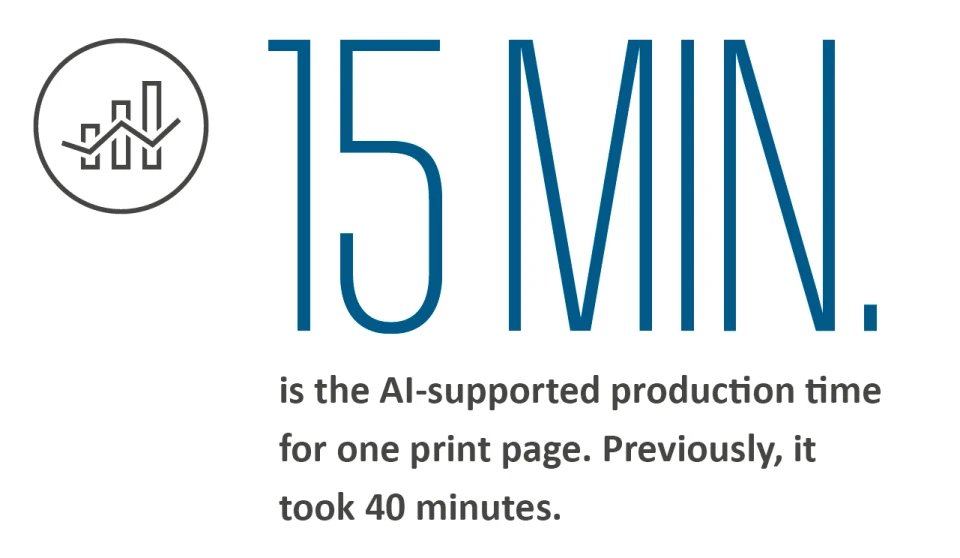
What is often overlooked in projects like this is that technology and editorial teams have different perspectives and sensitivities. ‘It was clear to us from the outset that the two areas would need to work closely together,’ says Sebastian Brinkmann. He is responsible for everything technical, while Moritz Stanarius is responsible for editorial matters. The two project managers communicate frequently and regularly to ensure that no important details are overlooked and that problems are addressed immediately. One example: software specialists felt it was unnecessary to show unfinished pages, while the editorial team insisted on being able to view the status quo at all times so that errors could be corrected early on or the layout could be redesigned.
6| What is the RP's initial conclusion?
Selection: When deciding on a system, it is important to take your time, test it thoroughly, ask questions and identify potential problems with conversion and technical integration.
Costs: The one-off investment for AI-supported automated print page production is likely to be in the low seven-figure range for a large media group such as the RP across all relevant newspapers. Ongoing costs are incurred through the use of AI tools and are calculated per application query. The investments are expected to pay for themselves in significantly less than ten years.
Benefits: By switching to AI-based layouts, RP expects to save around a third of its editorial positions in the long term, freeing up resources for reporters.
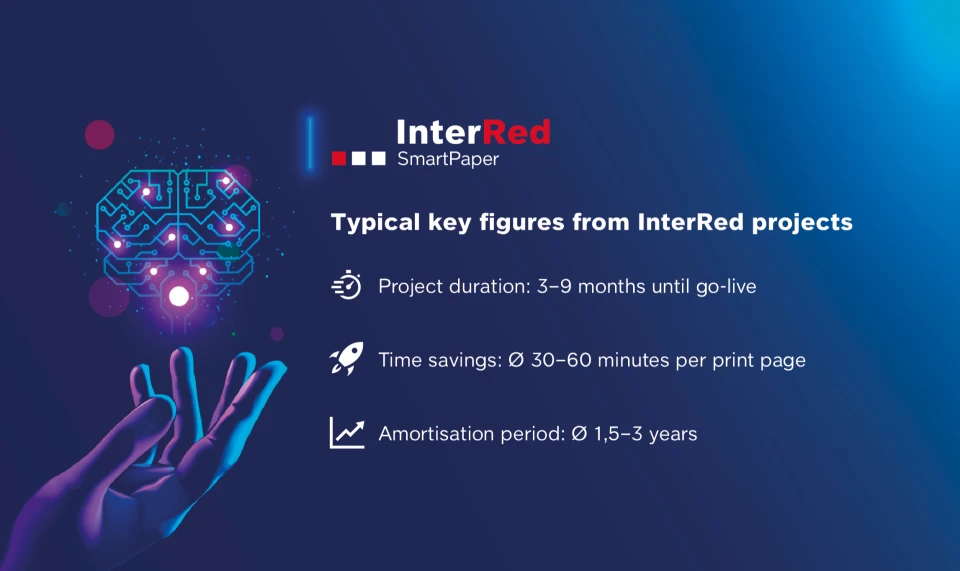
Lessons learned by RP
What is important when switching to AI-supported print production.
- Communicate early: Involving the team in the initial stages of the change process and informing them about the upcoming plans has proven to be a successful measure.
- Use structures: The familiar desk structure, which employees are familiar with, and good topic planning facilitated a smooth start.
- Avoid reactance: Technically necessary changes to the layout had no consequences. According to RP, the changes did not provoke any negative reactions among readers.
- Support experts: Internal experts are better than lengthy, sometimes ineffective training courses: anyone who is interested in new technology, finds change exciting and wants to get involved in the project can be integrated as a ‘key user’ and pass on the knowledge they have gained to others.
- Just get started: Every project has its stumbling blocks and minor issues – but with each rollout, it became clear that it was working after all.
Contact:
Sebastian Brinkmann, Director of Publishing Services, Information Technology Division, Rheinische Post Mediengruppe
ROLAND KARLE
is a freelance media journalist
Photos: Rheinische Post


